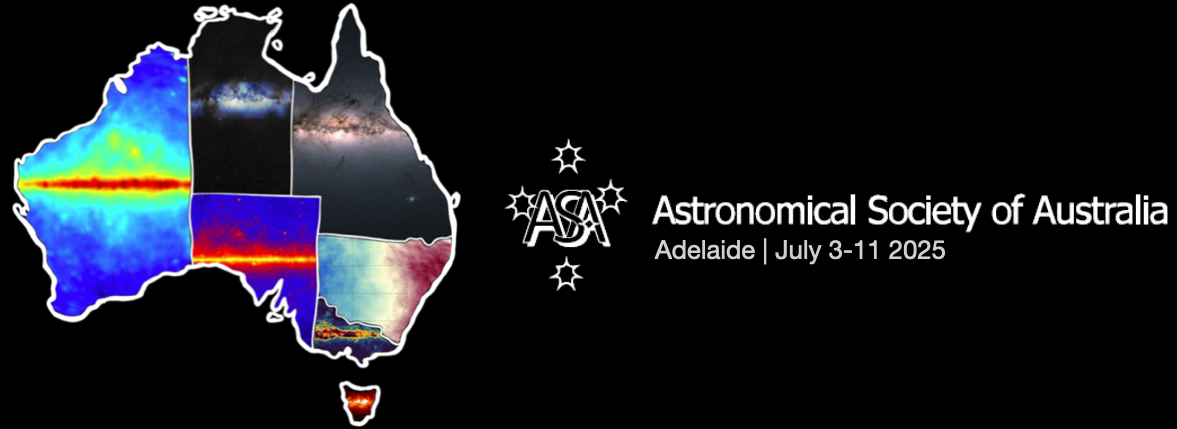Fast radio bursts (FRBs) are intense pulses of radio emission now known to originate in distant galaxies. They are showing their promise as tools to understand extreme physical processes and environments, and as powerful probes of the diffuse cosmic web of baryons, nearly impossible to study otherwise. One of the key instruments for detecting and studying FRBs has been the Australian SKA...
Due to their short timescales and sensitivity to radio propagation effects over cosmological volumes, high redshift Fast Radio Bursts (FRBs) are expected to be extremely powerful probes of our Universe. However, while a significant number of FRBs are expected to exist at high redshifts, detecting them has been difficult, with few confirmed at redshifts greater than one. In many other fields,...
In synchrotron transients, relativistic or sub-relativistic outflows interact with the surrounding medium, producing shocks that accelerate electrons and amplify magnetic fields. This generates synchrotron radiation observable at radio wavelengths. While the emission mechanism is broadly similar across events, variations in progenitor systems lead to a wide range of outflow velocities,...
The quest for radio transients has evolved into a thriving field, driven by the rise of wide field-of-view telescopes. In recent years, two remarkable classes of extreme coherent radio transients have emerged: long-period transients, with pulse durations from minutes to hours, and fast radio bursts, with pulse durations from microseconds to tens of milliseconds. Intriguingly, the long-period...
Fast infrared transients have not been well explored; however, we now have chance to search this parameter space. With creative analysis techniques, we are using the James Webb Space Telescope (JWST) to search for transients with lifetimes from seconds to minutes. A single exposure from JWST is made up of integrations that are combination of numerous non-destructive reads. This means that a...
In the last seven years the TESS space telescope has observed thousands of fast transients that have gone undetected, until now. With the TESSELLATE pipeline we are now searching all of the high-cadence Full Frame Images (FFIs) recorded by TESS for transient and variable phenomena. From processing less than 10% of the data from TESS, we have generated millions of detections which include...
The long-period radio transients are a newly-discovered class of Galactic radio sources that produce pulsed emission lasting tens of seconds to several minutes, repeating on timescales of tens of minutes to hours. Such cadence is unprecedented, and there is currently no clear emission mechanism or progenitor that can explain the observations, which include complex polarisation behaviour, pulse...
Long-period radio transients represent a newly identified class of astronomical objects with emission periods lasting minutes to hours. Their origins remain uncertain, with highly magnetised white dwarfs and neutron stars as leading candidates. These objects emit polarised, coherent, and beamed radio signals, resembling pulsars. Standard models suggest pulsars cease emitting as they slow down,...
The Galactic long period transients (LPTs) discovered in recent years are a mysterious new class of object. They have periods of tens of minutes to hours, and produce strongly polarised pulses lasting seconds to minutes. Their characteristics are phenomenologically analogous to neutron star pulsars albeit at much longer timescales, but the underlying emission mechanism is unclear.
The 2.1...
We present the discovery and characterisation of a novel white dwarf binary system, identified through optical spectroscopy and radio-wavelength observations. This system displays a short orbital period of ~1.3 hours, determined from Doppler shifts in Balmer emission lines, and exhibits unique radio emission characteristics.
We observed periodic bursts of elliptically polarised radio...

